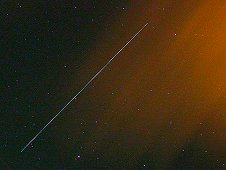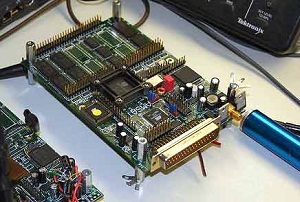 After spending more than 240 days “sailing” around the Earth, NASA’s NanoSail-D a nanosatellite that deployed NASA’s first-ever solar sail in low-Earth orbit has successfully completed its Earth orbiting mission. Launched to space Nov. 19, 2010 as a payload on NASA’s FASTSAT, a small satellite, NanoSail-D’s sail deployed on Jan. 20. The research team continues to analyze the orbital data to determine how future satellites can use this new technology.A main objective of the NanoSail-D mission was to demonstrate and test the deorbiting capabilities of a large low mass high surface area sail. “The NanoSail-D mission produced a wealth of data that will be useful in understanding how these types of passive deorbit devices react to the upper atmosphere,” said Joe Casas, FASTSAT project scientist at NASA’s Marshall Space Flight Center in Huntsville, Alabama.
After spending more than 240 days “sailing” around the Earth, NASA’s NanoSail-D a nanosatellite that deployed NASA’s first-ever solar sail in low-Earth orbit has successfully completed its Earth orbiting mission. Launched to space Nov. 19, 2010 as a payload on NASA’s FASTSAT, a small satellite, NanoSail-D’s sail deployed on Jan. 20. The research team continues to analyze the orbital data to determine how future satellites can use this new technology.A main objective of the NanoSail-D mission was to demonstrate and test the deorbiting capabilities of a large low mass high surface area sail. “The NanoSail-D mission produced a wealth of data that will be useful in understanding how these types of passive deorbit devices react to the upper atmosphere,” said Joe Casas, FASTSAT project scientist at NASA’s Marshall Space Flight Center in Huntsville, Alabama.
Source: Nasa Nanosail
Website: NanoSail

 AMSAT-NA VP Operations Drew Glasbrenner KO4MA reports on Friday’s IHU crash on the Amateur Radio satellite AO-51. Sometime between 1815 and 1945Z November 25, AO-51′s IHU crashed. This happened after a few days of intermittent and unpredictable operation.
AMSAT-NA VP Operations Drew Glasbrenner KO4MA reports on Friday’s IHU crash on the Amateur Radio satellite AO-51. Sometime between 1815 and 1945Z November 25, AO-51′s IHU crashed. This happened after a few days of intermittent and unpredictable operation. The search for the right TLE information has begun. After a launch, it’s always figuring out which objects in celestrak.com/NORAD/elements/tle-new.txt correspond to which satellite.
The search for the right TLE information has begun. After a launch, it’s always figuring out which objects in celestrak.com/NORAD/elements/tle-new.txt correspond to which satellite.